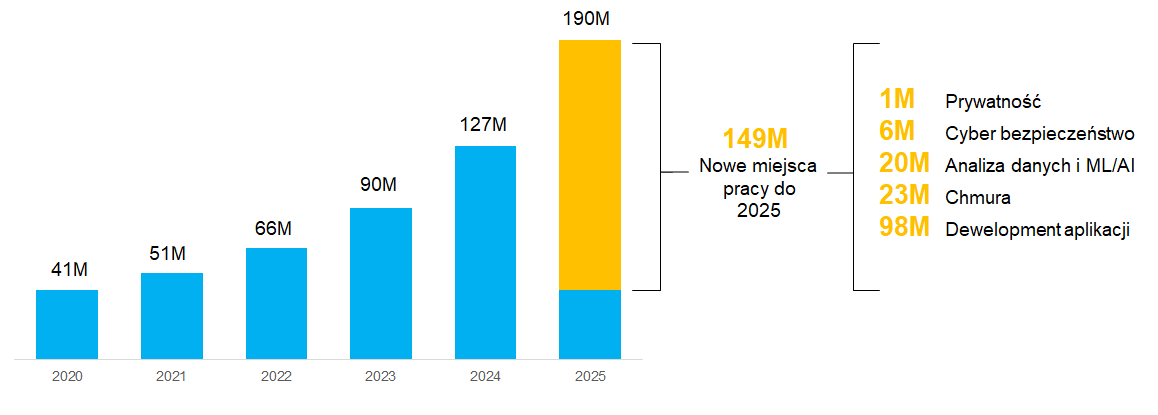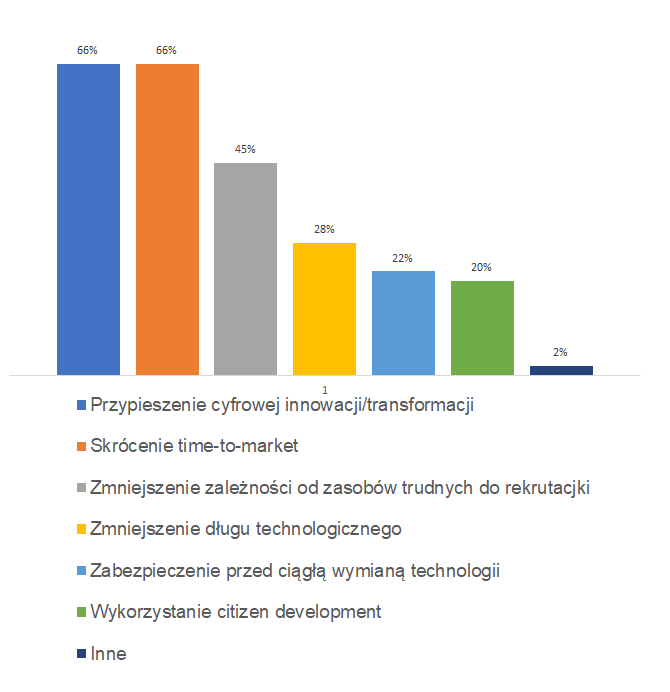Low-code – why it’s worth it
Low-code is a new approach to rapid application development and process automation. It is considered particularly useful for several practical reasons. This article explains why learning about the concept of low-code CRM/BPM development is a good idea and shows how low-code helps deal with some of the IT industry’s biggest challenges.
DIGITAL TRANSFORMATION
We live in an era of accelerated business transformation enabled by the Internet and digital technologies. The companies’ only goal is to add more value for customers in the most efficient way. As Salesforce puts it, “Digital transformation is the process of using digital technologies to create new – or modify existing – business processes, culture and customer experiences to meet changing business and market demands. This re-imagining of business in the digital age is what digital transformation is all about.”
Connecting people, removing data silos, building a data culture, eliminating manual processes through automation, empowering employees, mobile experiences, leveraging the Internet of Things – these are all examples of the digital revolution that is unfolding before our eyes.
These fundamental changes have been further reinforced by the COVID-19 pandemic, which has acted as a digital gas pedal in many industries. Business continuity and employee safety have suddenly been added to the strategic agenda of the boards of almost every organization in the world.
LIMITED AVAILABILITY OF IT RESOURCES
In the face of such massive changes, the IT industry cannot continue business as usual. There are not enough certified developers to respond to the business needs of organizations undergoing digital transformation.
According to company Microsoft, the global workforce could absorb some 149 million new technology-related jobs over the next five years – with software development accounting for the largest share of that forecast.

LOW-CODE CONCEPT
Low-code is an approach to software development that requires little or no coding to create applications and automated processes.
The low-code development platform uses a visual development environment with simple logic and drag-and-drop functions instead of traditional coding languages. Such intuitive tools allow users without formal knowledge to programmer create applications for multiple purposes – such as mobile and business applications.
Such informal developers – usually users who come from business departments – are called “citizen developers” by Gartner.
Low-code abstracts and automates every step of the application lifecycle to enable rapid delivery of diverse software solutions. It breaks through traditional silos of business and IT to promote continuous collaboration.
BENEFITS OF LOW-CODE
While the need for more IT staff is certainly an important factor for the expansion of low-code platforms, it is certainly not the only one, or even the most important one.
Other benefits of low-code may include: increased security, increased IT productivity, reduced shadow IT, and reduced number of failed projects.
These benefits are confirmed by the results of many studies. The following are the results of a survey conducted by company Outsystems in 2020.
In recent times, platforms low-code are becoming increasingly popular as a fast and convenient alternative to traditional software development. Both professional programmers and developers informal can use the low-code platform to develop applications that meet business requirements for new applications and process automation, enabling and accelerating digital transformation in their companies.
It is important to note that low-code does not diminish the value or importance of professional programmers. Instead, low-code enables developers to create value faster – by focusing on user experience rather than technical tasks that can be automated.

MARKET GROWTH
Given all the benefits of the low-code approach, it’s no wonder that more and more companies are adopting it today. Gartner estimates that low-code/no-code application platforms will account for nearly 65% of all applications being developed by 2024. This means that most applications developed in 2024 will be developed using low-code platforms and tools.
What’s more,
Gartner
forecasts that the global market for low-code development technology w
will grow by as much as 23% in 2021.
CONCLUSIONS
We live in an era of dynamic change. Unprecedented acceleration of digital and business transformation – fueled by still by the pandemic – has put enormous pressure on almost all companies and organizations around the world.
Low-code and no-code technologies seem to be the right answer to at least some of the current challenges. The economic consequences of the COVID-19 pandemic have confirmed the capabilities and added value of low-code platforms. Reducing development costs, supporting remote work, automating workflows and rapid application development are becoming critical to the survival of organizations of all sizes.
If you would like to learn more about low-code platforms and how they can help your business, please contact us.






